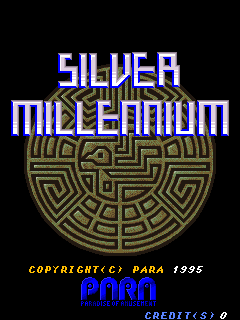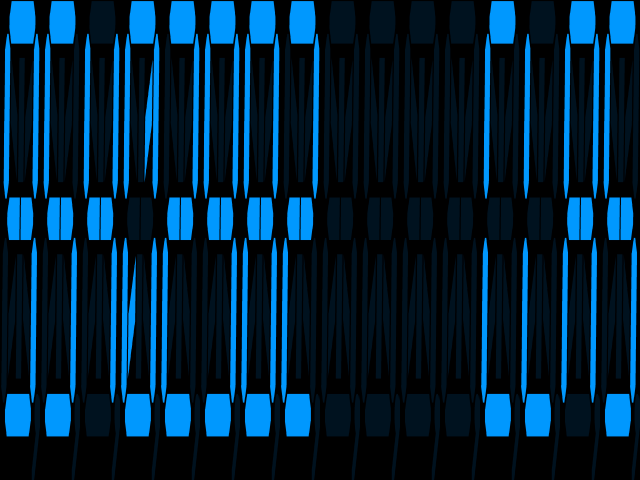The thing with Fruit Machines is that aside from the cabinet design, artwork and a couple of features they all look pretty much the same on the outside. Basically they have a bunch of lights, a number of reels usually 3+, some 7-segment digits for displaying credits and possibly a VFD / Dot Matrix Display for some additional text / graphics. Once you’ve reached the point of ‘Sample Playback’ You’re not going to see much difference in the sounds either, samples are samples.
That said there has been a clear progression in the technology too, just like video arcade hardware which I’m using to influence my decisions over what to work on. Basically the way I see it there are the following groups (Systems which are already emulated in MFME or other emulators are highlighted in BOLD, which is for the most part the same state as 6 years ago, ouch)
Very Old, Non CPU Hardware
This is the equivalent in Fruit Machine terms to Pong, no CPU, nothing to ’emulate’. Information I have on such systems is sketchy, so I don’t have a list of such systems (it’s possible they were custom built anyway) I’d guess these are entirely romless, because you’re not going to have a display either.
Early 8-bits
These are your Space Invaders equivalents, early techs using 8-bit CPUs, usually fairly basic setups, simple sounds etc. Growing industry starting to use CPUs offering solid ‘no-frills’ machines.
BFM System 83, BFM System 85, JPM System 80, JPM MPS(2), MPU2, MPU3, Original Electrocoin Bar X, Ace System 1, Maygay Triple M, Hazel Grove?
There are also some early ‘JPM’ games on unknown platforms.
Later 8-bits
Probably your ‘Golden Era’ there were a large number of manufacturers putting out platforms at this point, or refining the ones they had and reissuing them. I’d say these were your equivalents to the likes of PacMan, hugely popular machines which many people consider to be absolute classics. Linked boards also started appearing.
MPU4 (reminds me of Scramble, everybody rushing to get their games on the platform!)
Scorpion 1, Scorpion 2, Project Coin (ProConn), Castle, sp.Ace system, Maygay M1AB, Electrocoin Pyramid HW & revised BarX hardware.
Early 16-bits
The transition to 16-bit CPUs could probably be seen as your equivalent of CPS1, NeoGeo etc. Very similar to the later 8-bits but with more CPU power and different peripherals.
Jpm System 5, Jpm Impact, Astra hardware (Pluto 1-4?), BGT hardware, Stealth hardware, Stella (German?).
Later 16-bits / Early 32-bits
Consider these the equivalent of CPS2 or Taito F3. Mid 90s tech (~1996+) saw greater use of chips with integrated peripherals, to save on board space. These were popular systems with a decent shelf life and good flexibility but don’t really change all that much from the early 16-bit era, just refine it and allow manufacturers who didn’t have their own 16-bit platforms yet to catch up. Technically you might consider the 68340 used by some to be a 32-bit part, but in reality it’s not really all that different to the 16-bit 68307 or plain 68000.
Scorpion 4, Maygay Epoch, Pluto 5, MPU5
Everything above this line I’m considering looking at, I consider them ‘classic’ systems now, ones which have been phased out. Everything below this line I’m not actively looking at, skeleton drivers for *some* exist mainly through sorting of the sets. That’s not to say other people can’t look at them, but I don’t consider them a priority at all. None of the systems below are emulated (in a working state) by anything public at this point. The vast majority of things I’ve emulated in MAME have been 16-bit era 68000 based titles, so it stands to reason that the 16-bit platforms ABOVE are my main starting point, and I’ll be working upwards.
Later 32-bits
While the hardware is lagging quite far behind at this point I’d say these were the Fruit Machine equivalents of Naomi era hardware. Things have advanced to the stage where you can easily run complex compiled code on the boards without having to worry too much about performance levels. 40Mhz Coldfire (advanced 68040 type CPU) parts were all the rage at this point, a significant bump from the previous generation of parts where CPUs were typically 16mhz or below. These boards were pushed out in the early 2000s.
Scorpion 5, Pluto 6
Modern Tech
The modern era brought about faster processors (200Mhz+ Coldfires etc.) I don’t really have much information on these systems, they’re simply not interesting from an emulation point of view at this time.
Pluto 7+, MPU6, PC-based systems
Now keep in mind these are just my opinions based on what I’ve seen. The arcade system equivalents I’ve given are not meant as direct technological comparisons either, just how I see (from my limited exposure to the systems) their roles in fruit machine history. Some stuff here could easily be shifted by a generation, the exact lines are blurry. This isn’t meant to be a ‘my fruit machine is better than your fruit machine’ table, but instead simply a guide to what I consider viable in terms of emulation at the moment and to help people realise that while the machines might not look like the tech has advanced at all from the outside there were a large number of different platforms on the inside. There are of course oddball pieces of hardware which I’m not sure where to put, rarely used platforms and the like and things I simply haven’t been able to identify.
As you can see there are plenty of viable platforms both old and new which haven’t been emulated yet, mainly because a lot of the focus has always been on the more popular platforms and even within those there are a good number of titles which don’t work because they were paired with different external hardware for reels, hoppers, meters or had different security etc. There are also a number of platforms which aren’t listed at all, this is a very UK / Euro based list. The US, Australia, Russia (and presumably Japan) had their own industries and own games on other unknown platforms (although in some cases they just re-purposed old tech, MPU4 was very common)
Speaking of popular systems where only half the titles work Guitar recently released his ‘Project Amber’ which covers many of the MPU4 machines, including ones from the likes of Crystal which hadn’t previously been emulated properly. It also provides some really good looking lamp simulations correctly simulating many of the fancy light effects the boards do to create dimmed or ‘super bright’ lights, an area MFME has always been lacking and definitely a long-term goal of MAME rather than a short term one. I’d also like to thank him for his willingness to share his findings with MAME, which should save some time later down the line.
Obviously the Fruit Machines which are already emulated are a good target to get working because for any large amount of work you need solid foundations and it’s already well known what is needed for those, and there is always the chance to get a couple of titles working on already emulated platforms which require a little extra, MFME doesn’t emulate one-off custom additions, just the most common parts. The ones which aren’t emulated at all are of course more interesting from a technical point of view.
So.. not really a WIP update (I have nothing to report) just an information post.
Note, Comments are CLOSED on here for the time being, been getting quite a lot of spam, some of which has been getting through.



















